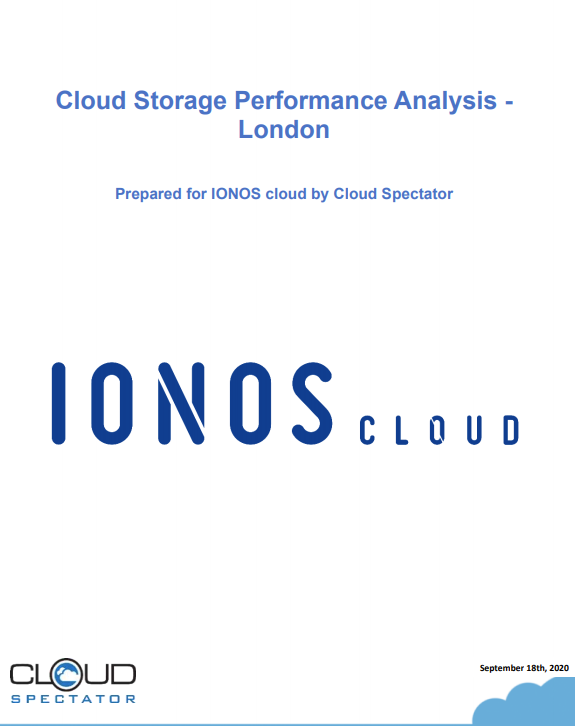Four ways to keep cloud costs under control
Individual cloud costs may look manageable, but can quickly spiral out of control. Read our tips to get a grip on cloud spending


The pandemic and its multiple lock downs proved to be a perfect business use case for cloud computing. From video conferencing to SaaS platforms, the world managed to keep working from everywhere and anywhere that wasn't a traditional office.
Yet despite the clear benefits that cloud can bring to a business, not all IT decision makers are on board; its cost and how much it can take from the budget is still a big concern for many.
Individually, certain services may seem cheap, but adding more and more to your business can quickly rack up an expensive bill at the end of each month. In a large organisation, this can also be hard to keep track of and ultimately hurt the budget.
On a larger scale, the Bank Of England recently warned that UK institutions are too reliant on a small subset of cloud providers. What's more, Google, Microsoft and Amazon Web Services have all reported increased cloud adoptions throughout the pandemic, with record-breaking revenues driving their growth towards trillion dollar valuations.
While it's very clear that the cloud is here to stay, the main providers are only going to get bigger and IT teams are going to have to find ways to keep the costs down, while still keeping ahead of the competition.
Budget cloud services carefully
Historically, IT departments were able to scope out the setup, maintenance and upgrade costs of on-premises equipment and services, and based on that, create realistic forecasts and budgets.
However, cloud services require a new way of budgeting, particularly as the majority of services are usually offered on a subscription basis.
Get the ITPro daily newsletter
Sign up today and you will receive a free copy of our Future Focus 2025 report - the leading guidance on AI, cybersecurity and other IT challenges as per 700+ senior executives
Licensing is often done on either a per-user basis or a usage basis, so getting the most accurate idea of the numbers of employees who will need to use the service is vital to have a clear picture of what the monthly costs will likely be.
Underestimating an organisation's demand for a service, which leads to exceeding or upgrading subscriptions, is one of the most common mistakes and can result in surpassing the original budget. But building flexibility into the monthly budget is a way of ensuring that fluctuations in users and usage won't be too disruptive.
Being vigilant about removing old or unwanted user accounts from employees who have left or no longer need the services is another quick win when it comes to finding small cost savings.
Manage cloud usage
With cloud services being used in so many ways across a business, costs can easily get out of control if employees don't fully understand the implications of their usage. If a cloud license is based on a usage model, applications left up and continually running by unaware staff can cause costs to accumulate.
One estimate states that enterprises can gain a 70% cost saving just by switching cloud services off when not in use.
Cloud storage is another area where planning and managing usage can bring significant cost savings. Inefficiently storing data can add extensive costs in the long-term, with multiple copies or unnecessary files taking up valuable space.
Having a thought-out plan when deciding which files should be stored in the cloud (often for backup purposes) and which could be stored on a local server at potentially lower cost, will help with managing costs.
Keep cloud services visible
Investing in tools that provide oversight of cloud usage and infrastructure may uncover significant savings elsewhere. These tools can help with choosing the best cloud options for various parts of the business, as well as identifying and removing apps that aren't being used and improving the functionality of existing apps.
RELATED RESOURCE

Cloud storage performance analysis
Storage performance and value of the IONOS cloud Compute Engine
Having knowledge of historical cloud usage and where savings could be found will make predicting future usage more accurate, and therefore the costs involved will be easier to anticipate and more straightforward to control. Cloud management platforms can be a useful way to do this.
Visibility over licenses and users will also help with billing. Cloud services present a challenge for businesses as costs can be difficult to split between departments. Having a clear way of tracking who is using what service will make it easier to split cloud service bills in the long run, which in turn will spread the financial burden across multiple departments.
Integrate cloud services
Many larger organisations will be using a mixture of on-premises and cloud resources across a hybrid cloud infrastructure, so ensuring that services are integrated across management platforms is important for monitoring usage and consistency with other business applications.
A standalone cloud service may be the best option for your business in some cases, but these are often less cost-effective than a packaged suite of services when everything is added up.
There are many benefits to ensuring your cloud services are integrated with other systems you use, such as easy data collection and transfer, and ease of use for employees - scrambling around different platforms for files is far from time efficient!
Esther is a freelance media analyst, podcaster, and one-third of Media Voices. She has previously worked as a content marketing lead for Dennis Publishing and the Media Briefing. She writes frequently on topics such as subscriptions and tech developments for industry sites such as Digital Content Next and What’s New in Publishing. She is co-founder of the Publisher Podcast Awards and Publisher Podcast Summit; the first conference and awards dedicated to celebrating and elevating publisher podcasts.
-
 M&S suspends online sales as 'cyber incident' continues
M&S suspends online sales as 'cyber incident' continuesNews Marks & Spencer (M&S) has informed customers that all online and app sales have been suspended as the high street retailer battles a ‘cyber incident’.
By Ross Kelly
-
 Manners cost nothing, unless you’re using ChatGPT
Manners cost nothing, unless you’re using ChatGPTOpinion Polite users are costing OpenAI millions of dollars each year – but Ps and Qs are a small dent in what ChatGPT could cost the planet
By Ross Kelly
-
 Nutanix Cloud Clusters (NC2)
Nutanix Cloud Clusters (NC2)Whitepaper Gain comprehensive visibility into your entire hybrid cloud environment
By ITPro
-
 Multi-cloud data integration for data leaders
Multi-cloud data integration for data leadersWhitepaper A holistic data-fabric approach to multi-cloud integration
By ITPro
-
 New partnership lets users store Facebook data on Dropbox
New partnership lets users store Facebook data on DropboxNews Facebook has asked for better legislation to make it easier for users to transfer photos and videos to a competing tech platform
By Sabina Weston